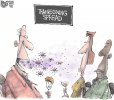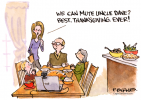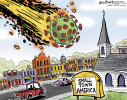Navigation
Install the app
How to install the app on iOS
Follow along with the video below to see how to install our site as a web app on your home screen.
Note: This feature may not be available in some browsers.
More options
Style variation
Guest viewing limit reached
- You have reached the maximum number of guest views allowed
- Please register below to remove this limitation
- Already a member? Click here to login
You are using an out of date browser. It may not display this or other websites correctly.
You should upgrade or use an alternative browser.
You should upgrade or use an alternative browser.
Can touching a barbell in the gym get you sick with the coronavirus?
- Thread starter Michael Scally MD
- Start date
Samuel RM, Majd H, Richter MN, et al. Androgen Signaling Regulates SARS-CoV-2 Receptor Levels and Is Associated with Severe COVID-19 Symptoms in Men. Cell Stem Cell. 2020 Nov 17:S1934-5909(20)30547-6. doi: 10.1016/j.stem.2020.11.009. Epub ahead of print. PMID: 33232663. Androgen Signaling Regulates SARS-CoV-2 Receptor Levels and Is Associated with Severe COVID-19 Symptoms in Men
Highlights
Drug screens on hESC cardiac cells identify modulators of SARS-CoV-2 receptor ACE2
Targets of drugs that reduce ACE2 converge on androgen signaling pathway
Androgen signaling inhibition reduces SARS-CoV-2 infection in hESC lung organoids
Elevated androgen increases COVID-19 susceptibility and severity in men
SARS-CoV-2 infection has led to a global health crisis, and yet our understanding of the disease and potential treatment options remains limited. The infection occurs through binding of the virus with angiotensin converting enzyme 2 (ACE2) on the cell membrane. Here, we established a screening strategy to identify drugs that reduce ACE2 levels in human embryonic stem cell (hESC)-derived cardiac cells and lung organoids. Target analysis of hit compounds revealed androgen signaling as a key modulator of ACE2 levels. Treatment with antiandrogenic drugs reduced ACE2 expression and protected hESC-derived lung organoids against SARS-CoV-2 infection. Finally, clinical data on COVID-19 patients demonstrated that prostate diseases, which are linked to elevated androgen, are significant risk factors and that genetic variants that increase androgen levels are associated with higher disease severity. These findings offer insights on the mechanism of disproportionate disease susceptibility in men and identify antiandrogenic drugs as candidate therapeutics for COVID-19.
Highlights
Drug screens on hESC cardiac cells identify modulators of SARS-CoV-2 receptor ACE2
Targets of drugs that reduce ACE2 converge on androgen signaling pathway
Androgen signaling inhibition reduces SARS-CoV-2 infection in hESC lung organoids
Elevated androgen increases COVID-19 susceptibility and severity in men
SARS-CoV-2 infection has led to a global health crisis, and yet our understanding of the disease and potential treatment options remains limited. The infection occurs through binding of the virus with angiotensin converting enzyme 2 (ACE2) on the cell membrane. Here, we established a screening strategy to identify drugs that reduce ACE2 levels in human embryonic stem cell (hESC)-derived cardiac cells and lung organoids. Target analysis of hit compounds revealed androgen signaling as a key modulator of ACE2 levels. Treatment with antiandrogenic drugs reduced ACE2 expression and protected hESC-derived lung organoids against SARS-CoV-2 infection. Finally, clinical data on COVID-19 patients demonstrated that prostate diseases, which are linked to elevated androgen, are significant risk factors and that genetic variants that increase androgen levels are associated with higher disease severity. These findings offer insights on the mechanism of disproportionate disease susceptibility in men and identify antiandrogenic drugs as candidate therapeutics for COVID-19.
Miyazato Y, Morioka S, Tsuzuki S, et al. Prolonged and Late-Onset Symptoms of Coronavirus Disease 2019. Open Forum Infect Dis. 2020 Oct 21;7(11) faa507. doi: 10.1093/ofid/ofaa507. PMID: 33230486; PMCID: PMC7665672. Prolonged and Late-Onset Symptoms of Coronavirus Disease 2019
faa507. doi: 10.1093/ofid/ofaa507. PMID: 33230486; PMCID: PMC7665672. Prolonged and Late-Onset Symptoms of Coronavirus Disease 2019
Some patients who recover from coronavirus disease 2019 (COVID-19) have prolonged symptoms such as dyspnea, fatigue, cough, and dysosmia for longer than 120 days after symptom onset. In addition, some patients who recovered from COVID-19 reported hair loss a few months after the onset of the disease. Alopecia is a late-onset symptom of COVID-19. The cause of alopecia is unknown; however, androgenic alopecia and telogen effluvium are possible causes.
Some patients who recover from coronavirus disease 2019 (COVID-19) have prolonged symptoms such as dyspnea, fatigue, cough, and dysosmia for longer than 120 days after symptom onset. In addition, some patients who recovered from COVID-19 reported hair loss a few months after the onset of the disease. Alopecia is a late-onset symptom of COVID-19. The cause of alopecia is unknown; however, androgenic alopecia and telogen effluvium are possible causes.
Is it time to upgrade your mask?
By now most of us have settled on a preferred cloth mask to protect ourselves and others from coronavirus. But new research shows that a few simple upgrades in fabric, filters and fit are likely to provide even more protection.
Linsey Marr, professor of civil and environmental engineering at Virginia Tech and one of the world’s leading aerosol scientists, led the research, which tested 11 different mask materials. The findings confirmed what other labs have found: You don’t need a gold-standard N95 medical mask to stay safe from coronavirus. The right cloth mask, properly fitted, does a good job of filtering viral particles of the size most likely to cause infection.
But Dr. Marr and her colleagues found that small improvements to your mask can go a long way toward improving how well the mask protects you and others from potential infectious particles. They found that:
Three layers are better than two. The best mask has two tightly woven layers of outer material with a filter material sandwiched in the middle, Dr. Marr said. You can use surgical mask material or even a piece of a vacuum bag as a filter between two pieces of fabric. Coffee filters are an option, but can be less breathable. If you like your two-layer mask, you can just wear it over a surgical mask when you want added protection. A well-fitting fabric mask with a third filter layer can stop 74 to 90 percent of risky particles, the researchers found.
Flexible material is better. Stiff material creates gaps. Look for a mask made of tightly woven flexible material that contours to your face. Masks with wire that can be molded around the nose also fit better by closing gaps where air can escape out and seep in.
Villain
Member

Maker of COVID Tests Says Pandemic is Biggest Hoax Ever Perpetrated
FULL TRANSCRIPT: Doctor destroys ‘utterly unfounded public hysteria’ over COVID-19 ‘This is not Ebola. It’s not SARS. It’s politics playing medicine and that’s a very dangerous game…mas…
Villain
Member

Horowitz: Pro-mask study withdrawn after virus spread in counties analyzed by researchers | Blaze Media
'Because there are increased rates of SARS- CoV-2 cases in the areas that we originally analyzed in this study'
 www.theblaze.com
www.theblaze.com
Villain
Member
Villain
Member
from the comments. I saw an iterview where Fauci said as much.
Is it me, or do they look like little vaccine needles.
Similar threads
- Replies
- 33
- Views
- 1K
- Replies
- 56
- Views
- 1K








